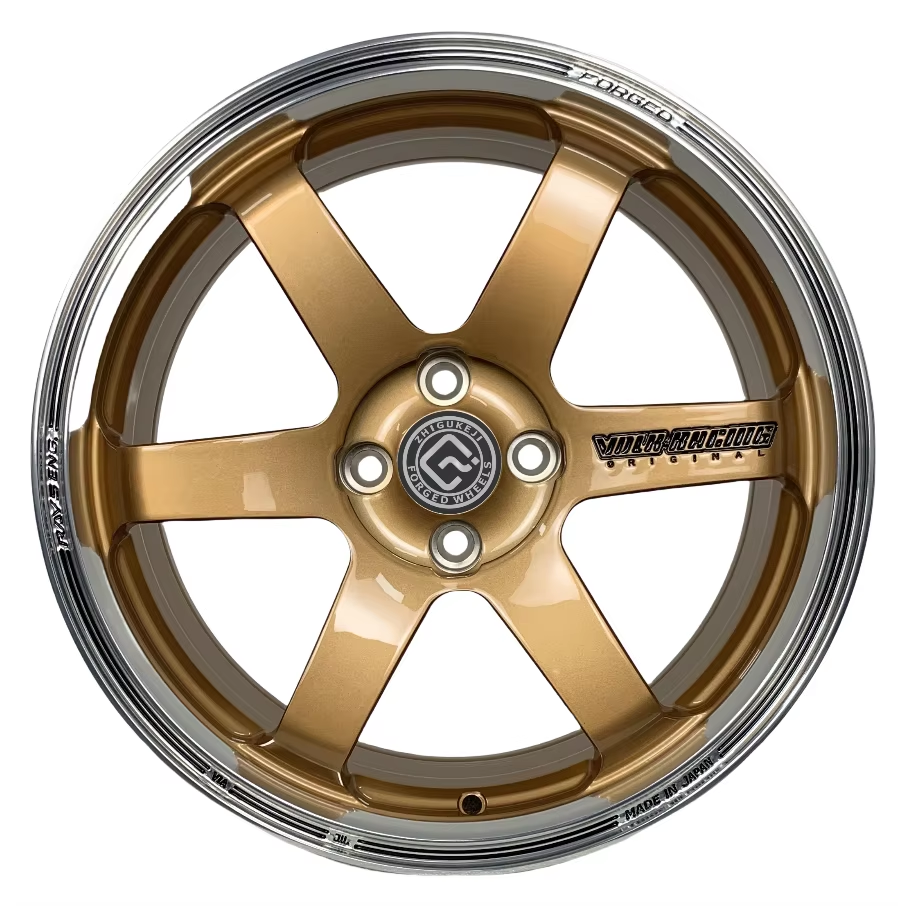Understanding Wheel Rims: Types and Materials
Alloy vs. Steel Wheels: Strength vs. Weight
When it comes to wheel rims, most people choose between alloy and steel options, both having their own strengths. Alloy wheels typically contain aluminum or magnesium and weigh much less than traditional steel ones. This lighter build helps cars go faster and handle better, plus saves gas at the pump. Lighter wheels mean less weight hanging around the axles, so the car responds quicker when accelerating or turning corners. Steel wheels are different though they're built from tough carbon steel and can take a real beating. That's why many trucks and SUVs stick with steel rims when driving over rocky roads or through muddy trails. A recent test looked at Maruti Suzuki Baleno models and found that alloy rims handled stress and heat way better than steel alternatives. Most drivers prefer alloys for daily city driving because they feel smoother underfoot, but steel remains king when tackling rough terrain where durability matters most.
OEM vs. Aftermarket Wheels: Key Differences
Picking out wheel rims gets complicated fast when we start looking at OEM versus aftermarket choices. OEM wheels come straight from the car company itself, so they fit perfectly right out of the box and usually boost resale value since people know where they came from. Aftermarket wheels tell a different story though. These let folks get creative with how their ride looks on the road, offering all sorts of styles and even some performance upgrades here and there. But watch out there's no getting around the fact that these third party wheels might not always fit just right or could mess with what warranties cover. Looking across the industry lately, more drivers seem drawn to custom wheels because nobody wants to drive something that looks exactly like everyone else's anymore. While manufacturers keep making new designs available, most people still end up going through specialty shops for something truly one of a kind, even if that means dealing with some extra headaches about whether everything will actually work together long term.
Why 16-Inch Alloy Wheels Dominate Urban Driving
People love 16 inch alloy wheels for city driving because they strike just the right note between being nimble and comfortable. City streets tend to have tight corners and lots of bumps and potholes, so drivers need something that handles all that rough stuff without getting tossed around. The alloy version manages to keep things light enough for easy handling while still giving decent cushioning over rough patches. What makes them special? They actually soak up road shocks pretty well, which means less jarring when zipping through town traffic. Take the Honda Civic for example it comes standard with these wheels and folks rave about how smooth it rides even on those terrible city streets. Most people who drive in cities notice a real difference when switching to 16 inch alloys, reporting far fewer vibrations and better control during daily commutes.
The Role of Offset and Fitment in Wheel Rim Design
How Offset Rims Improve Handling Dynamics
The term offset in wheel design basically means how far the middle line of the wheel sits from where it mounts onto the hub. This measurement matters a lot when talking about how a car handles around corners and bends. The numbers work out mathematically speaking, and we get three main types: positive offset, zero offset, and negative offset. Each one changes how the car behaves differently on the road. Getting this right actually improves grip and keeps things stable while driving, particularly noticeable when taking tight turns at speed. Take sports cars as a good example they're built with special attention to these offset measurements because their engineers know that getting this detail correct makes all the difference in terms of holding the road better and giving drivers confidence when pushing harder through curves.
Tesla Rims: Case Study in Modern Fitment Standards
The way Tesla handles wheel rims and fitment standards really stands out as something special in today's automotive world where safety matters so much. Their rims aren't just pretty things on the side of cars either they actually help boost how the vehicles perform. The company uses lighter materials while making sure everything fits just right according to strict safety rules. Some tests show these wheels play a big role in why Teslas can accelerate so fast and still manage energy efficiently during drives. People who own these electric cars often talk about how reliable their wheels feel, especially when cornering at high speeds or navigating rough roads. Many owners mention that there's almost no vibration from the wheels even after long trips, which makes for a much smoother ride overall compared to other brands they've driven before.
Avoiding Rubbing: A Guide to Proper Rim Sizing
When rims are sized wrong, they tend to rub against things which makes annoying noises and can actually damage tires over time. Getting the right fit is really important whenever someone wants to upgrade or replace their wheels. People need to know about things like wheel offset measurements and might need some special tools to get everything just right. Most rim size recommendations take into account what works best for common cars out there today. For example, trucks usually need different specs than compact cars do. Sticking to proper sizing rules keeps everything running smoothly and avoids all sorts of trouble down the road when driving around town or taking longer trips on highways.
Exploring Aftermarket Wheels: Customization and Trends
3D-Printed Designs: The Future of Custom Rims
The world of wheel rims is getting a major facelift thanks to 3D printing tech, which lets manufacturers offer totally customized options that weren't possible before. These printed rims can be made into all sorts of complicated shapes and patterns that match both how they look and how well they perform on the road. They really stand out when compared to regular aftermarket wheels. A bunch of different companies have started jumping on board with 3D printing for rims, creating custom pieces that people can actually personalize according to what they want. Most folks who get their hands on these new rims seem pretty happy with them, especially since they can pick exactly what they like about the design. We're seeing more and more interest in this kind of thing across the market right now. Looking ahead, as the technology keeps improving, it looks like we'll see even more personalized and efficient ways to manufacture those aftermarket wheels everyone loves.
Powder Coatings: Durability Meets Aesthetics
When it comes to wheel rims, powder coating gives them not just good looks but also lasts way longer compared to regular paint jobs. The process starts by dusting on this special powder stuff onto the rim surface, then heating it up until it turns into this tough protective layer. What makes this technique stand out is how well it fights off rust spots and those annoying scratches we all hate seeing on our cars. From basic matte black finishes to shiny chrome effects, there's practically every color under the sun available these days. Mechanics I've talked to say that properly coated wheels can survive years of road salt exposure without showing signs of wear. For anyone looking to protect their investment while still wanting their ride to pop visually, this seems like the smartest bet around.
Sustainable Wheels: Recycled Aluminum Innovations
Using recycled materials to make wheel rims brings real environmental advantages while also tapping into the increasing desire for green products on the market today. When companies source aluminum from scrap materials rather than virgin sources, they end up creating wheels that are both lighter weight and just as durable, which cuts down on their overall impact on the planet. Recent improvements in how we recycle aluminum mean manufacturers can now churn out these eco-friendly wheels much faster than before, cutting down on wasted material during production. Market research shows most consumers actually prefer buying sustainable options when given the choice, something that's becoming especially important in car parts shopping decisions. As more people become aware of climate issues, this shift toward greener alternatives makes sense for both businesses looking to cut costs and customers wanting to do their part for the environment.
How Wheel Rims Impact Vehicle Performance and Safety
Lightweight Rims and Fuel Efficiency
Getting lighter rims on cars makes a real difference to how they perform because it cuts down the total weight, which means better gas mileage. What happens scientifically speaking is that when wheels weigh less, there's less unsprung mass to deal with. That makes accelerating easier, braking smoother, and turning more responsive overall. Research indicates something pretty interesting too lighter wheels can boost fuel savings around 6 to 8 percent whenever wheel weight drops by 10%. As governments worldwide tighten emission regulations, this kind of efficiency becomes more important than ever. Electric car owners especially benefit since shedding pounds translates into longer trips between charges, something that matters a lot when range anxiety still lingers for many drivers.
Heat Dissipation in High-Performance Alloys
Proper heat dissipation through wheel rims matters a lot for maintaining good performance and keeping vehicles safe, particularly when driving fast or applying heavy brakes repeatedly. Manufacturers use special high-performance alloys designed specifically for this purpose. These materials spread heat away from critical components so brakes don't overheat during intense driving situations. When picking out these alloys, engineers look at how well they conduct heat while still being strong enough to handle stress. They run all sorts of tests including thermal cycling experiments and real-world track evaluations to verify their effectiveness. Studies show that wheels with superior heat management characteristics result in quicker brake response times and tires that last longer before needing replacement. This makes all the difference in competitive racing environments where every fraction of a second counts and equipment reliability is absolutely essential.
DOT/ISO Certifications: Ensuring Road Readiness
DOT and ISO certifications are really important when it comes to making sure wheel rims stay safe and reliable while driving. What these certifications actually mean is that the wheels meet certain requirements for how they're made, what materials go into them, and how well they perform under stress. Certified rims go through all sorts of tests and quality checks before hitting the market, which makes them last longer and hold up better in different weather and road conditions. Research shows certified wheels tend to be involved in far fewer accidents than uncertified ones, which explains why road safety experts keep pushing for wider adoption of these standards. For both auto manufacturers looking to build trustworthy products and everyday drivers wanting peace of mind, proper certification isn't just nice to have it's practically necessary.




